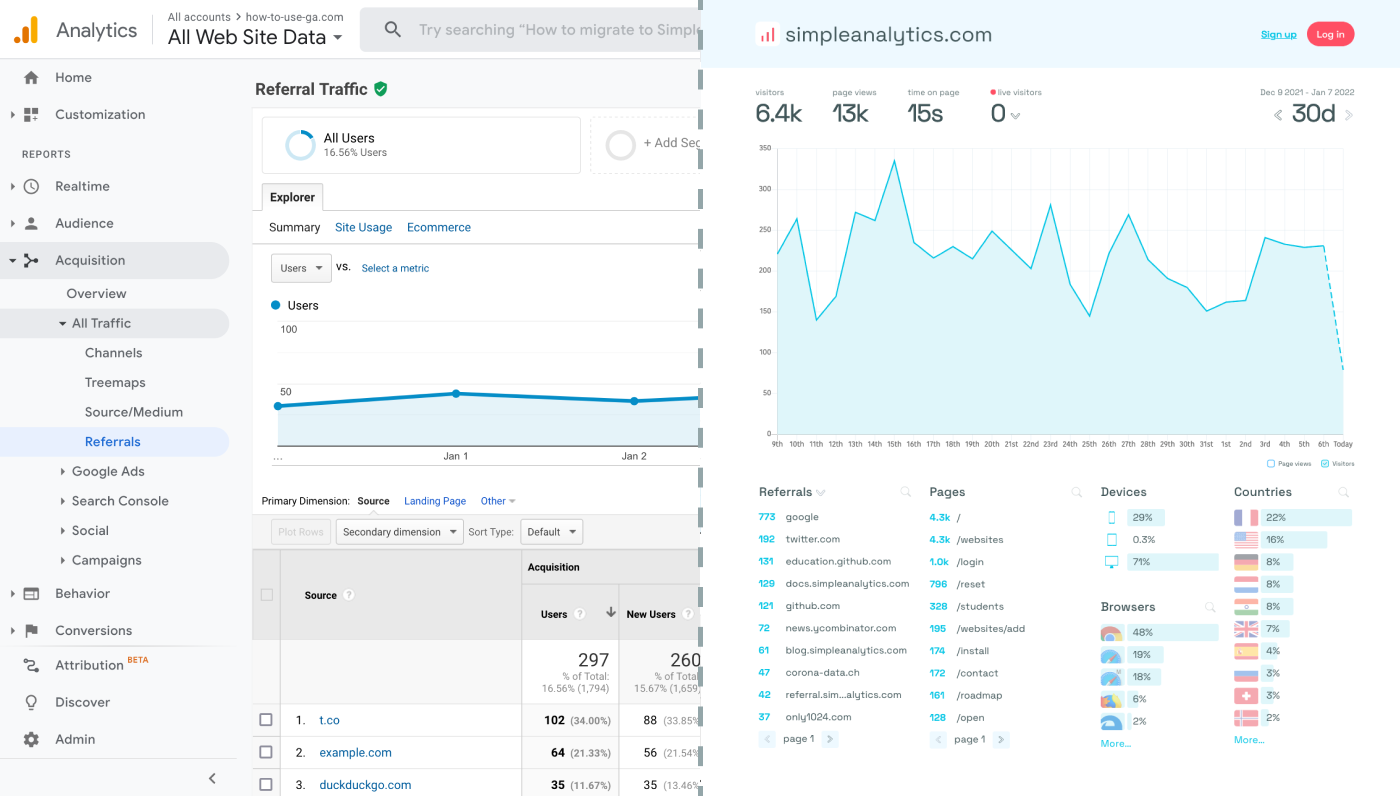Google Analytics can give you greate insight on user behavior and e-commerce performance. Thankfully, Magento makes it easy to add Google Analytics. Here is how to do it, step by step.
Let's dive in!
Before we dig in I want to show you something. I promise it's worth it...
Google Analytics is great, but also complex and a bit clunky. If you just want a straightforward dashboard with the insights you need, GA is not a great place to start. Additionally, Google doesn't care about privacy and GA requires an annoying cookie banner.
That's why I built Simple Analytics, a privacy-friendly and simple analytics tool - no personal data, no cookies, just the insights you need in a straightforward dashboard.
Here is how it looks vs GA. Feel free to check our live analytics to get an idea for your project. (It is free btw)
All right, enough about us. Now let's get into answering your question!

Here's a step-by-step guide to integrate Google Analytics 4 (GA4) with your Magento store.
Integrating Google Analytics
Set up Google Analytics
- Log into your GA profile (or create one, if you haven't already).
- Create a GA property for your store.
- Inspect the property and note down your Measurement ID. You will need it later.
Adding Google Analytics
- Access your Magento store's backend by logging into the admin panel.
- In the Magento admin panel, go to ‘Stores’ > ‘Configuration’.
- Under ‘Configuration’, navigate to ‘Sales’ and then ‘Google API’. In Magento 2, this might be under ‘Sales’ > ‘Google API’ > ‘Google Analytics’.
- Navigate to the ‘Google API’ settings:
- Set ’Enable Google Analytics’ to ‘Yes’.
- Enter Your GA Measurement ID** in the ‘Account Number’ field.
- Save the Configuration.
Note: Magento uses the Universal Analytics code format (UA-XXXXX-Y). For GA4 integration, you might need to use a custom solution or extension, as the direct input of the ‘G-’ format Measurement ID might not be supported natively.
Verify the Integration
After configuring Google Analytics in Magento, check the real-time data in your GA dashboard to ensure that tracking is working correctly. You might also consider using browser tools like the Google Analytics Debugger for Chrome to verify the setup.
(Optional) Create New Properties
To track multiple stores, create more GA properties and use the corresponding Measurement IDs. This prevents GA from conflating the data.
Final Thoughts
Adding Google Analytics to your store can give you great insights. However, ask yourself: is Google Analytics the right tool for you?
GA is an overpowered solution for straightforward analytics. If you're looking for a simple and intuitive dashboard with the insights you need, there are better alternatives. Yes, I’m talking about my own product (Simple Analytics), but there are others out there as well.
I hated using Google Analytics for my projects. It's clunky, there are hundreds of dashboards and it doesn't look appealing. Also Google doesn't care about privacy or ethics. That's why I decided to build my own and more intuitive web analytics tool.
If this resonates with you, feel free to give Simple Analytics a spin. You just need to add the script to your store and off you go. This takes about one minute- and there is a free version as well!
Enjoy!
